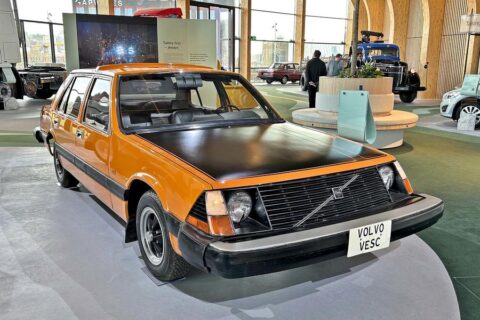Volvo L248 (1939-1954)
Known as the Roundnose, the L248 drew inspiration from American, British and German trucks, and was the first Volvo commercial vehicle to differ significantly from the cars in terms of design. Its 99bhp diesel engine helped it become a popular hauler, and Volvo’s first sales smash.
Volvo White Bus (1945)

Currently located in a special exhibition section, the White Bus is one of the more sobering vehicles on display. In the closing months of World War II, the Swedish Red Cross dispatched fleets of vehicles to concentration camps to rescue prisoners and bring them to Sweden. The 75 vehicles, including this bus, made hundreds of trips, saving more than 15,000 prisoners.
Volvo Penta Aquamatic (1959-present)

Volvo Group doesn’t just do land vehicles: in 1959, it introduced the pioneering Penta Aquamatic boat engine, which combines the drive unit of an outboard motor with the fuel efficiency of an inboard unit. The mechanicals are inside the boat, but the propeller is placed outboard. It’s a hugely significant machine for boating history.
Volvo PV445 Duett (1953-1960)

The fortunes of Volvo’s car division transformed with the PV444, developed in the final years of World War II as a smaller, cheaper, more fuel-efficient vehicle. It was the first profitable Volvo car, and the chassis would be used for a range of models, the most significant of which is this PV445 Duett – the first Volvo estate.
Volvo P1800 S (1961-1972)

The 1800 S sports car was intended to boost Volvo’s brand internationally, with the design by student Pelle Petterson, who later went on to style lawnmowers and golf clubs. This car was bought by American teacher Irv Gordon in 1966 and he subsequently clocked up more than three million miles in it, setting a world record in 2013.
Volvo Experimental Safety Car (1972)

The VESC was unveiled at Geneva in 1972, and was a test lab for safety kit that would later become common on cars, including airbags, a rear-view camera, anti-lock brakes and an impactabsorbing bumper. The colour was chosen for visibility, while there is also an eyesight line stripe on the bonnet designed to improve depth perception.
